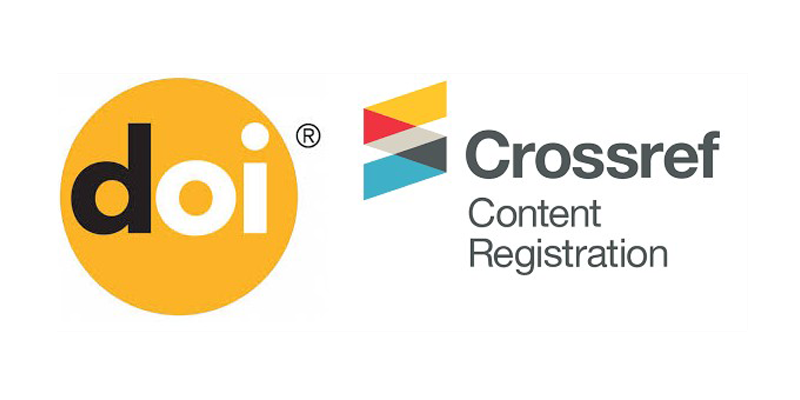Guidelines for Authors
Guidelines for authors on submitting articles to journal
Bulletin of L.N. Gumilyov Eurasian National University. Philology Series
The Editorial Board asks authors to get acquainted with the rules of the journal (Editorial Policy; Guidelines for Authors; and Publication Ethics) and follow them for the preparation of papers that are submitted to the journal. Deviation from the established rules delays the publication of the article.
- The submission of an article to the Editorial Board constitutes the consent of the author(s) to the right of the Publisher, L.N. Gumilyov Eurasian National University, to publish the article in the journal.
- The article shall be submitted to the editorial office (via OJS (Open Journal System) in Word-format (page – A4, portrait orientation, margins on all sides - 20 mm. Font: type - Palantino Linotype, size – 12).
IRSTI http://grnti.ru - first line, left; initials and surname of the author(s) - center alignment, italics; full name of the organization, city, country (if the authors work in different organizations, it is necessary to put the same icon near the surname of the author and the corresponding organization; e-mail of the author(s) - italics in brackets; title of the article - center alignment in bold).
The style file can be downloaded from the journal website http://bulphil.enu.kz. Authors should submit two versions of the manuscript, one of which should not contain information about the authors (full name, place of work, information about the authors), as anonymized text is required for double-blind reviewing. The author(s) should also provide a cover letter. The files of the manuscript should be numbered, named with the first 4-5 words of the paper title (e.g.; 1. Semantics of toponyms of Astana - file with the authors' names; 2. Semantics of toponyms of Astana - file without authors' names).
- The optimal volume of the article should be not less than 2000 words and no more than 5000 words. The abstract, keywords, references, information about the author in Kazakh, Russian and English are not included in the article volume. Papers exceeding the indicated volume will be accepted for publication in exceptional cases by a special decision of the Editorial Board of the Journal.
- The text of the article should begin with IRSTI (International Rubricator of Scientific and Technical Information; defined by the link http://grnti.ru/), then there should be stated the author(s) initials and surname, full name of the organisation, city, country, e-mail of the author(s), article title, abstract, keywords.
The abstract is a summary of the research paper and is used to help the reader quickly grasp the essence of the paper. The abstract should be written in such a way that it speaks for itself as an independent part of the manuscript. It should describe the manuscript in a coherent and informative manner and follow the structure of the paper. Statements should flow smoothly from one to the other. Sentences identical to sentences from the text of the manuscript, formulas (except chemical ones), symbols, literature references, figures and tables, web links and emails should be avoided. The abstract should motivate the reader to read the entire paper. The structure of the abstract should begin with a description of the object of study and be followed by a statement of the problem or motivation, the methods used, the most notable results and their significance. Where appropriate, established terminology should be used. The abstract should be 150-200 words in length.
Keywords (no more than 7 words or phrases) should reflect the main content of the article; define the subject area of research; can be found in the text of the article. Keywords are separated from each other by a comma.
Potential authors of the journal should adhere to the following rules on the structure of the article (introduction, methodology, problem statement, article purpose, history, research methods, results / discussion, conclusion):
- Necessary designations and definitions for understanding of the article text;
- Problem Statement, the consideration (solution) of which the article is devoted to;
- Historical information on the issue in question with corresponding full references by whom and when the results preceding the topic of the article were obtained;
- Substantiation of the necessity and relevance of the article as the most important part of any scientific work;
- Historical information on the formulation of the problem with the corresponding full references, to who and when the results were obtained, preceding the topic of the article
- Precise wording and description of the result presented in the article;
- Detailed justification of the novelty of the article result(s) in the context of the previously known;
- The presented results should be provided with detailed justifications.
After the text of the article (before the list of references) the contribution of the author(s) shall be indicated.
If at least one of these requirements is not satisfied, the article will not be accepted for consideration.
- Tables are to be included directly in the text of the paper, they should be numbered and accompanied by a reference to them in the text of the article. Figures, graphs should be presented in one of the standard formats: PS, PDF, TIFF, GIF, JPEG, BMP, PCX. Point drawings should be made with a resolution of 600 dpi. The drawings should clearly present all the details.
- The reference should contain only those sources (numbered in citation order or in English alphabetical order) that are referenced in the text of the paper. References to unpublished papers, the results of which are used in the proofs, are not acceptable. The list of references shall be designed according to APA style, 7th ed. (https://apastyle.apa.org /).
- After the References it is necessary to indicate the bibliographic data (article title, fullname of the author(s), full name of the organisation, city, country, author(s) e-mail, article title, abstract, key words) in Russian and English (if the article is written in Kazakh), in Kazakh and English (if the article is written in Russian) and in Russian and Kazakh (if the article is written in English).
- Then a combination of English and transliterated parts of the reference list is provided. The transliteration is provided using the online platform http://translit-online.ru . This online platform does not transliterate specific letters of the Kazakh alphabet. Authors should make corrections here after transliteration of the Kazakh text, according to the following rules:
|
ә |
ғ |
ң |
ө |
ү |
ұ |
қ |
і |
|
a |
g |
n |
o |
y |
y |
k |
i |
- Then Authors should supply information on each of the authors (full name, scientific degree, work place, address, city, country - in Kazakh, Russian and English).
- Editorial Office Address: 010008, Kazakhstan, Astana, Satpayev Str., 2., L.N.Gumilyov Eurasian National University, Main Building, room 402. Tel. (7172) 709-500 (int. 31-413).
- Authors who have received a positive review should make payment using the details below. Payment for ENU staff – 2 000 KZT per 1 page (soft copy), 2 500 KZT per 1 page (soft and hard copy).
Payment for other organizations - 2 500 KZT per 1 page (electronic version), 3 000 KZT per 1 page (soft and hard copy). Foreign authors (without co-authors from the Republic of Kazakhstan) may publish articles on a free basis.
Bank details:
L.N. Gumilyov Eurasian National University
BIN 010140003594
1) JSC "Bank CenterCredit"
RCBIC: KCJBKZKX
KZ978562203105747338
Beneficiary Code 16
Payment purpose code 859 - for manuscript
2) JSC "Bank RBK"
RCBIC: KINCKZKA IIIC:
KZ498210439858161073
Beneficiary Code 16
Payment purpose code 859- for manuscript
3) Manuscripts can be paid for via Kaspi.kz application. For this, open Kaspi.kz mobile application.
Kaspi.kz > Payments > Education > Universities and Colleges > Name of educational institution (L.N.Gumilyov ENU)
- Type of payment - Articles and publications
2. Faculty - Philological
3. Specialty - Series, issue of the journal, for example: Philology (e.g. 2(141)/2022)
4. Payer's IIN
5. Author's full name
6. Notes - optional






